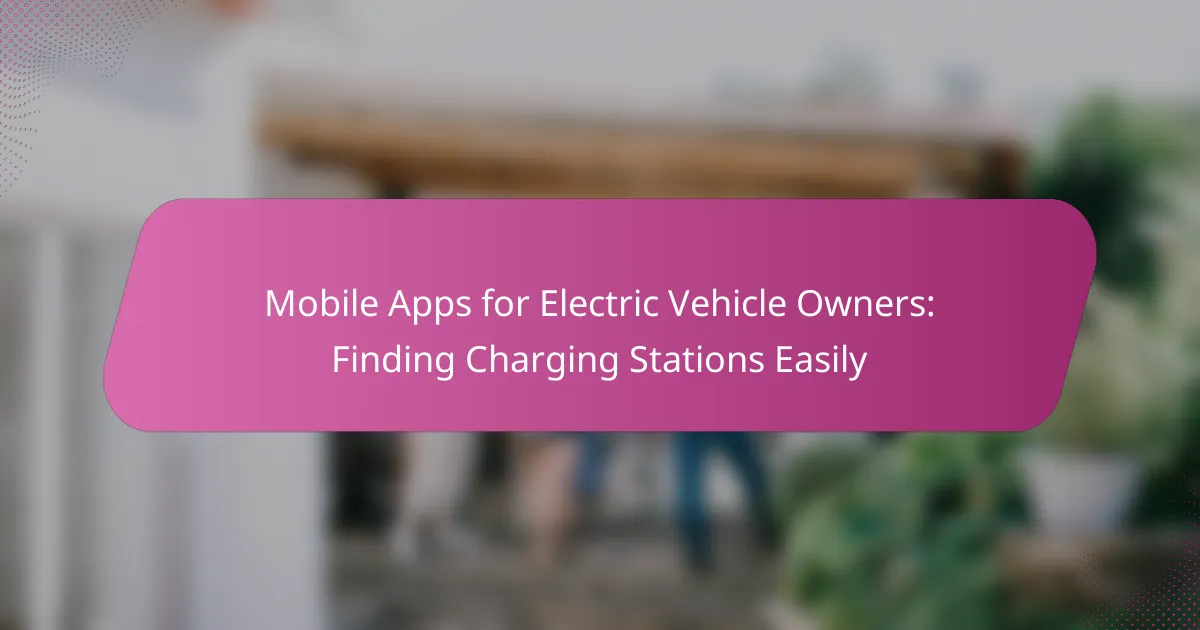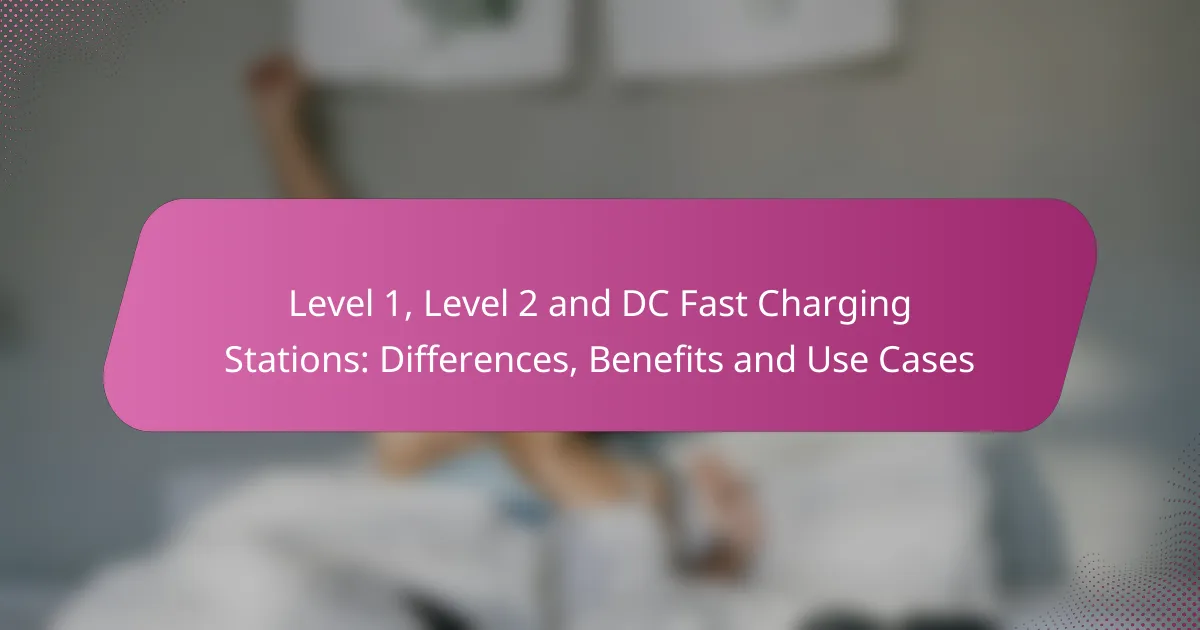Mobile apps have become indispensable for electric vehicle (EV) owners, offering a seamless way to locate charging stations across the US. With real-time updates on availability, station types, and user reviews, these apps simplify the journey for EV drivers, ensuring they can efficiently manage their charging needs and plan their trips with confidence.
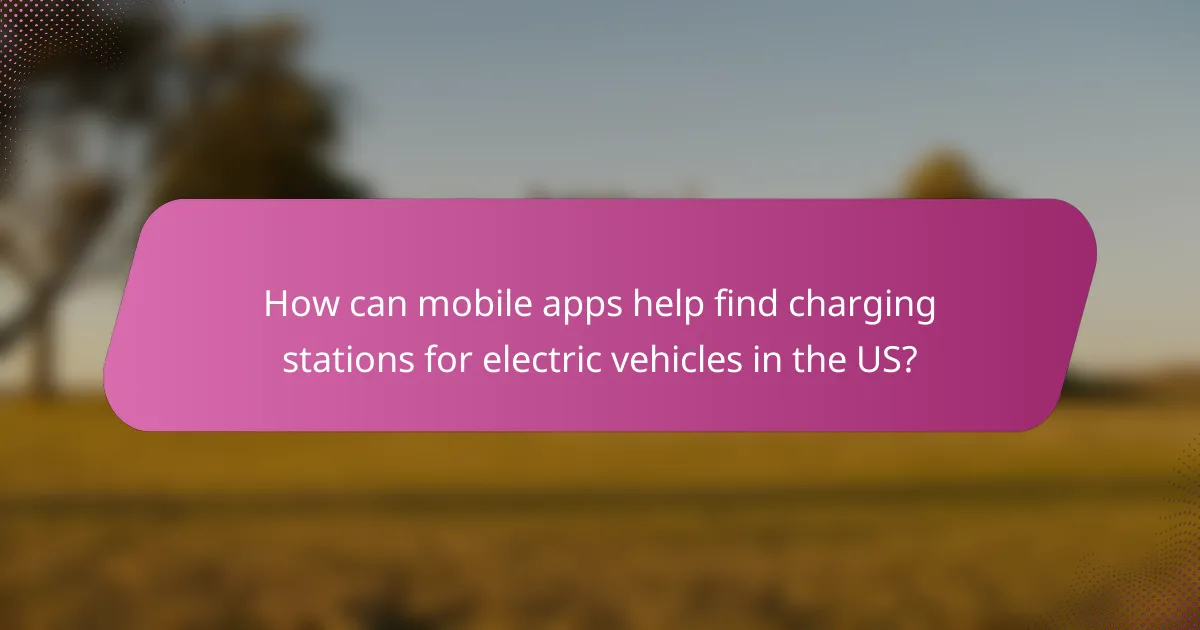
How can mobile apps help find charging stations for electric vehicles in the US?
Mobile apps are essential tools for electric vehicle (EV) owners in the US, as they provide easy access to charging station locations. These apps enhance the driving experience by offering features that simplify the process of locating and utilizing charging infrastructure.
Real-time location tracking
Real-time location tracking allows EV owners to see their current position and nearby charging stations on a map. This feature is crucial for planning charging stops, especially during long trips where charging options may be limited.
Many apps utilize GPS technology to provide accurate, up-to-date information about your surroundings. Users can filter results based on charging station types, such as fast chargers or standard outlets, ensuring they find the most suitable option quickly.
Route planning features
Route planning features in mobile apps enable users to map out their journey while incorporating charging stops along the way. This functionality is particularly useful for long-distance travel, as it helps avoid running out of battery by ensuring that charging stations are included in the route.
Some apps allow users to input their vehicle’s battery capacity and current charge level, automatically suggesting the best charging stations based on distance and charging speed. This can save time and reduce range anxiety during trips.
Charging station availability updates
Charging station availability updates provide real-time information about whether a charging station is in use or available. This feature helps users avoid wasted trips to occupied stations, making the charging process more efficient.
Many apps integrate user-generated data to report on station status, including any issues or maintenance updates. This crowdsourced information can enhance reliability and ensure that EV owners can find functional charging stations when needed.
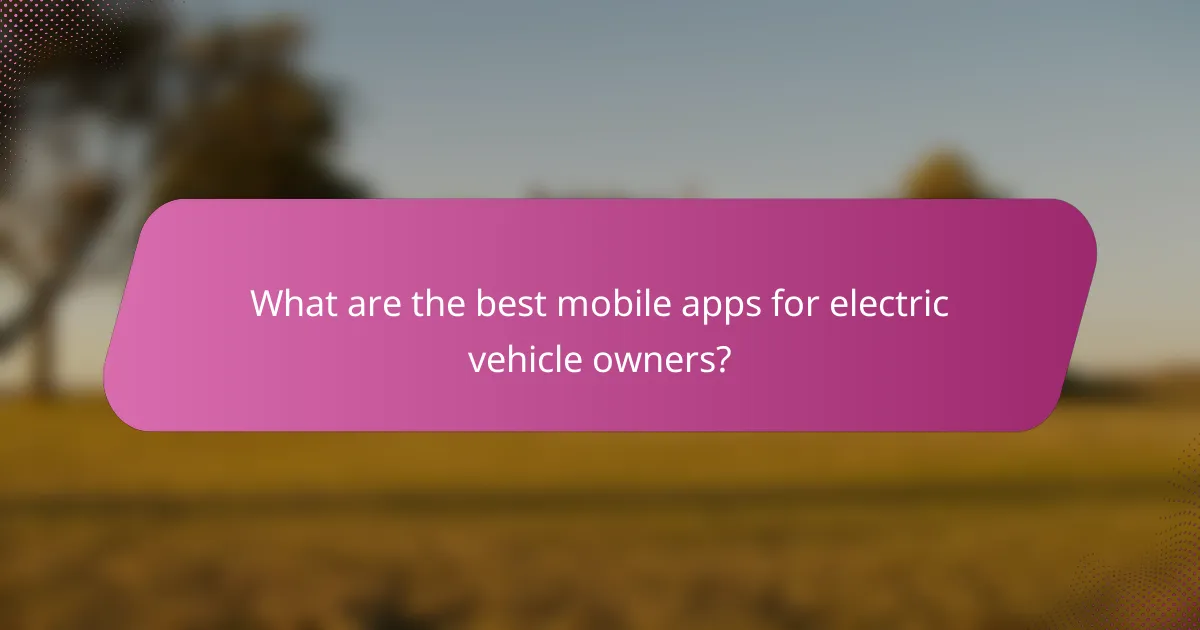
What are the best mobile apps for electric vehicle owners?
The best mobile apps for electric vehicle (EV) owners help users locate charging stations quickly and efficiently. These apps provide real-time information on charging availability, station types, and user reviews, making it easier to plan trips and manage charging needs.
PlugShare
PlugShare is a widely used app that offers a comprehensive map of charging stations across various networks. Users can filter by charging type, view station availability, and read reviews from other EV owners, which helps in making informed decisions about where to charge.
One of the key features of PlugShare is its community-driven approach, allowing users to add new stations and report issues. This ensures that the information remains up-to-date and reliable. The app is free to use, making it accessible for all EV owners.
ChargePoint
ChargePoint is another popular app that focuses on its own network of charging stations, which is one of the largest in the U.S. The app provides real-time updates on station availability and allows users to start charging sessions directly from their smartphones.
ChargePoint also offers a rewards program for frequent users, which can lead to discounts on charging costs. The app is user-friendly and includes features like route planning to help users find the nearest available stations based on their current location.
Electrify America
Electrify America specializes in fast charging stations, making it ideal for long-distance travel. The app provides a map of its charging locations, complete with real-time availability and pricing information, which is particularly useful for planning longer trips.
Users can also set up an account to manage charging sessions and payments seamlessly. The app often includes promotions and discounts, making it a cost-effective choice for EV owners who frequently use fast charging stations.
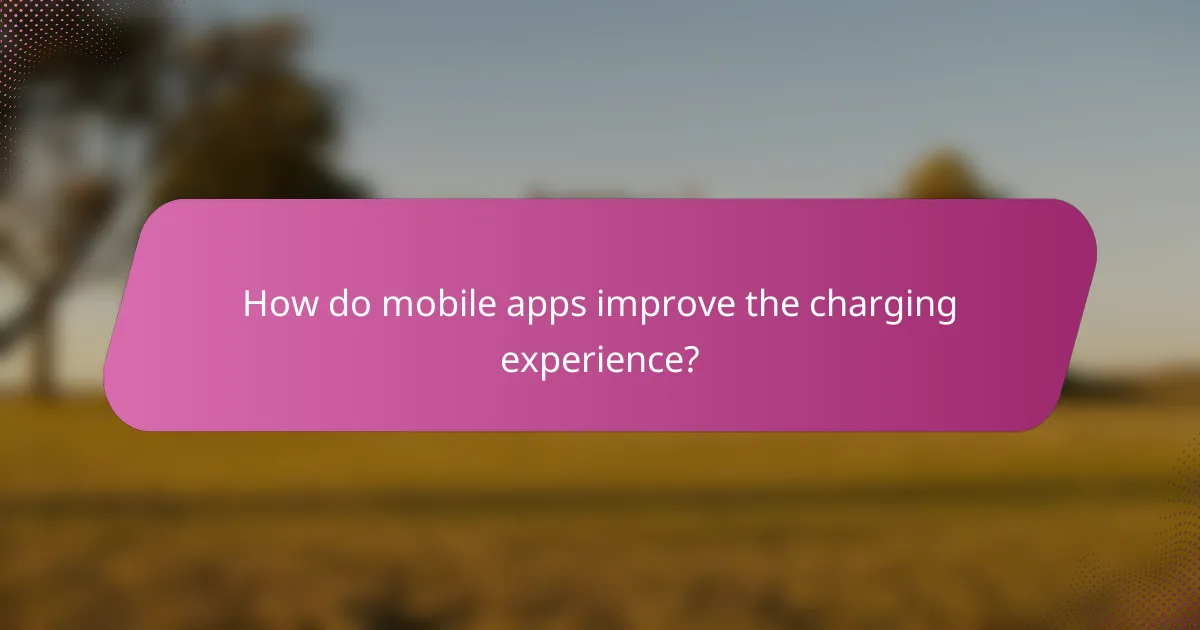
How do mobile apps improve the charging experience?
Mobile apps enhance the charging experience for electric vehicle (EV) owners by providing real-time information about charging station availability, locations, and user feedback. These tools streamline the process of finding and accessing charging points, making it more convenient and efficient for drivers.
User reviews and ratings
User reviews and ratings play a crucial role in helping EV owners select charging stations. Apps often feature feedback from other users, highlighting the reliability, speed, and overall experience at specific locations. This information can guide drivers to the best options, avoiding stations with frequent issues or long wait times.
When choosing a charging station, look for apps that aggregate user ratings and provide detailed comments. A station with a high rating and positive reviews is typically a safer bet for a quick and hassle-free charging experience.
Payment integration options
Many mobile apps now include integrated payment options, allowing users to pay for charging directly through the app. This feature simplifies the payment process, eliminating the need for multiple cards or accounts at different charging networks. Users can often link their credit or debit cards for seamless transactions.
When selecting an app, consider those that support various payment methods, including mobile wallets. This flexibility can save time and enhance convenience, especially when charging at unfamiliar stations.
Navigation assistance
Navigation assistance is another key feature of mobile apps for EV owners, providing turn-by-turn directions to the nearest charging stations. This functionality helps drivers efficiently reach their destination without wasting time searching for charging points. Many apps utilize real-time traffic data to optimize routes.
Look for apps that offer offline maps or downloadable routes, which can be particularly useful in areas with limited cell service. This ensures that you can still find charging stations even when connectivity is poor.
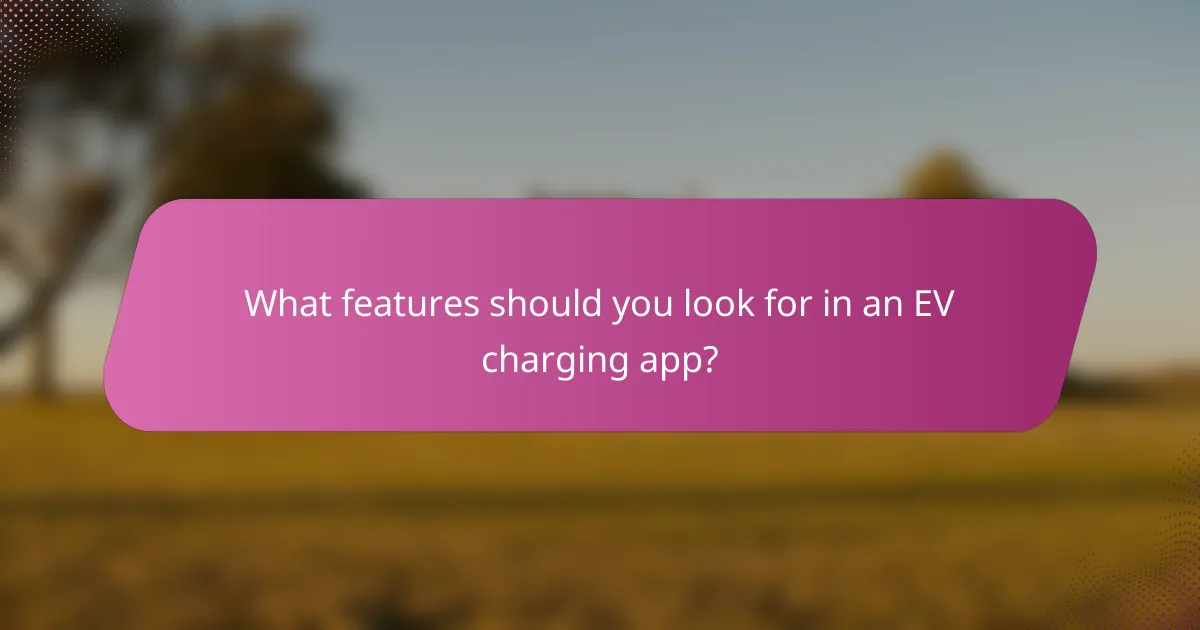
What features should you look for in an EV charging app?
When selecting an EV charging app, prioritize features that enhance your charging experience, such as a comprehensive charging network, real-time updates, and a user-friendly interface. These elements ensure you can easily locate charging stations and access timely information about their availability and functionality.
Comprehensive charging network
A robust charging app should provide access to a wide range of charging stations, including fast chargers and standard outlets. Look for apps that cover various networks, ensuring compatibility with your vehicle and maximizing your charging options.
Some popular apps include ChargePoint, PlugShare, and EVgo, which offer extensive maps of charging locations across different regions. This feature is especially important when traveling, as it helps you plan your route and avoid running low on battery.
Real-time updates
Real-time updates are crucial for knowing the status of charging stations, including availability and any outages. Apps that provide live information can save you time and frustration by directing you to operational chargers.
Many apps offer features like user-generated reports and notifications about station status changes. This functionality allows you to make informed decisions and adjust your plans based on current conditions.
User-friendly interface
An intuitive user interface enhances your experience by making it easy to navigate the app and find charging stations quickly. Look for apps with clear maps, simple search functions, and straightforward filtering options.
Consider apps that allow you to customize your preferences, such as filtering by charging speed or station type. A well-designed interface can significantly reduce the time spent searching for charging options, making your EV journey more enjoyable.
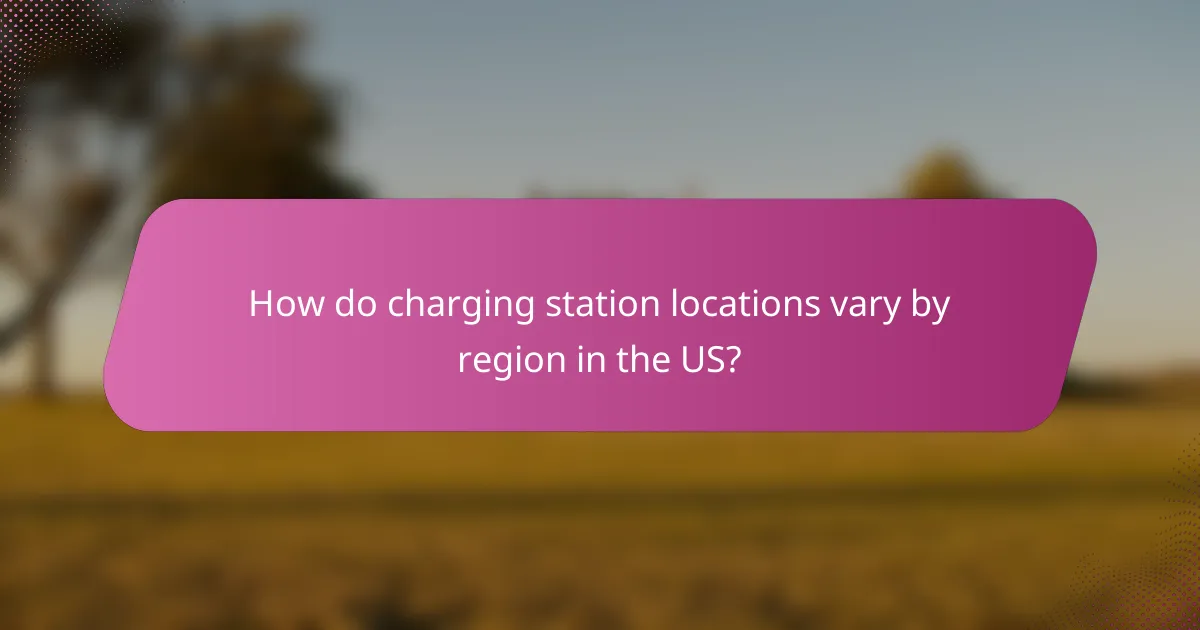
How do charging station locations vary by region in the US?
Charging station locations in the US differ significantly based on region, influenced by factors such as population density, state policies, and local infrastructure. Urban areas typically have a higher concentration of charging stations compared to rural regions, where access may be more limited.
Urban vs rural availability
In urban areas, electric vehicle (EV) owners can find numerous charging stations due to higher demand and supportive infrastructure. Cities often feature charging stations in parking garages, shopping centers, and public spaces, making it easier for residents and visitors to charge their vehicles.
Conversely, rural areas may have fewer charging stations, which can lead to range anxiety for EV owners. It’s advisable for drivers in these regions to plan their routes carefully and identify charging options ahead of time, as stations may be spaced farther apart.
State-specific incentives
Different states offer various incentives to promote the installation of charging stations. For example, some states provide tax credits or grants to businesses and local governments that install EV chargers, which can enhance availability in those areas.
Additionally, states like California have aggressive targets for expanding charging infrastructure, while others may lag behind. Checking state-specific programs can help EV owners understand where they might find more charging options and potential cost savings.
Regional charging networks
Regional charging networks play a crucial role in the availability of charging stations. Networks such as ChargePoint, EVgo, and Electrify America have developed extensive infrastructures in certain areas, making it easier for EV owners to locate and access charging stations.
In some regions, partnerships between local governments and private companies enhance the charging network, ensuring that stations are well-distributed and accessible. EV owners should familiarize themselves with the dominant networks in their area to maximize their charging options and convenience.
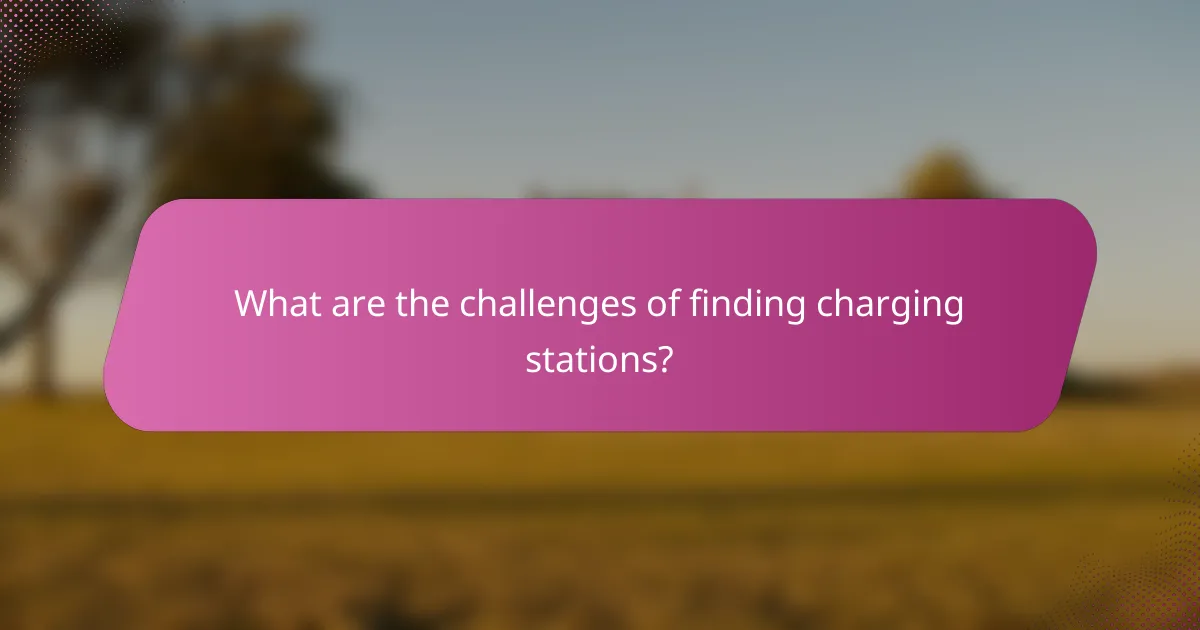
What are the challenges of finding charging stations?
Finding charging stations for electric vehicles can be difficult due to various challenges, including limited infrastructure, inconsistent data from apps, and long wait times during peak hours. These factors can complicate the charging experience for owners, making it essential to understand and navigate these issues effectively.
Limited charging infrastructure
The availability of charging stations varies significantly by region, with urban areas generally having more options than rural locations. In many places, the number of charging points is still low compared to the growing number of electric vehicles on the road. This discrepancy can lead to situations where drivers struggle to locate a nearby station, especially in less populated areas.
To mitigate this, EV owners should familiarize themselves with local charging networks and consider using apps that provide real-time data on station availability. Planning routes that include charging stops can also help avoid running out of battery in areas with sparse infrastructure.
Inconsistent app data
Many mobile apps designed to help locate charging stations often suffer from outdated or inaccurate information. Users may find that a station listed as available is actually out of service or occupied, leading to frustration and wasted time. This inconsistency can stem from a lack of real-time updates from charging station operators.
To address this issue, it’s advisable to use multiple apps to cross-reference charging station availability. Some apps allow users to report issues, which can help improve the accuracy of the data over time. Checking user reviews and recent activity can also provide insights into the reliability of specific charging locations.
Long wait times during peak hours
During peak hours, such as mornings and evenings, charging stations can become crowded, leading to long wait times for EV owners. This is particularly common in areas with high concentrations of electric vehicles and limited charging options. Drivers may find themselves waiting for a station to become available, which can disrupt travel plans.
To minimize wait times, consider charging during off-peak hours when demand is lower. Additionally, using fast chargers can significantly reduce the time spent at a station. Planning ahead and knowing the busiest times for charging stations can help EV owners avoid delays and keep their journeys on track.
